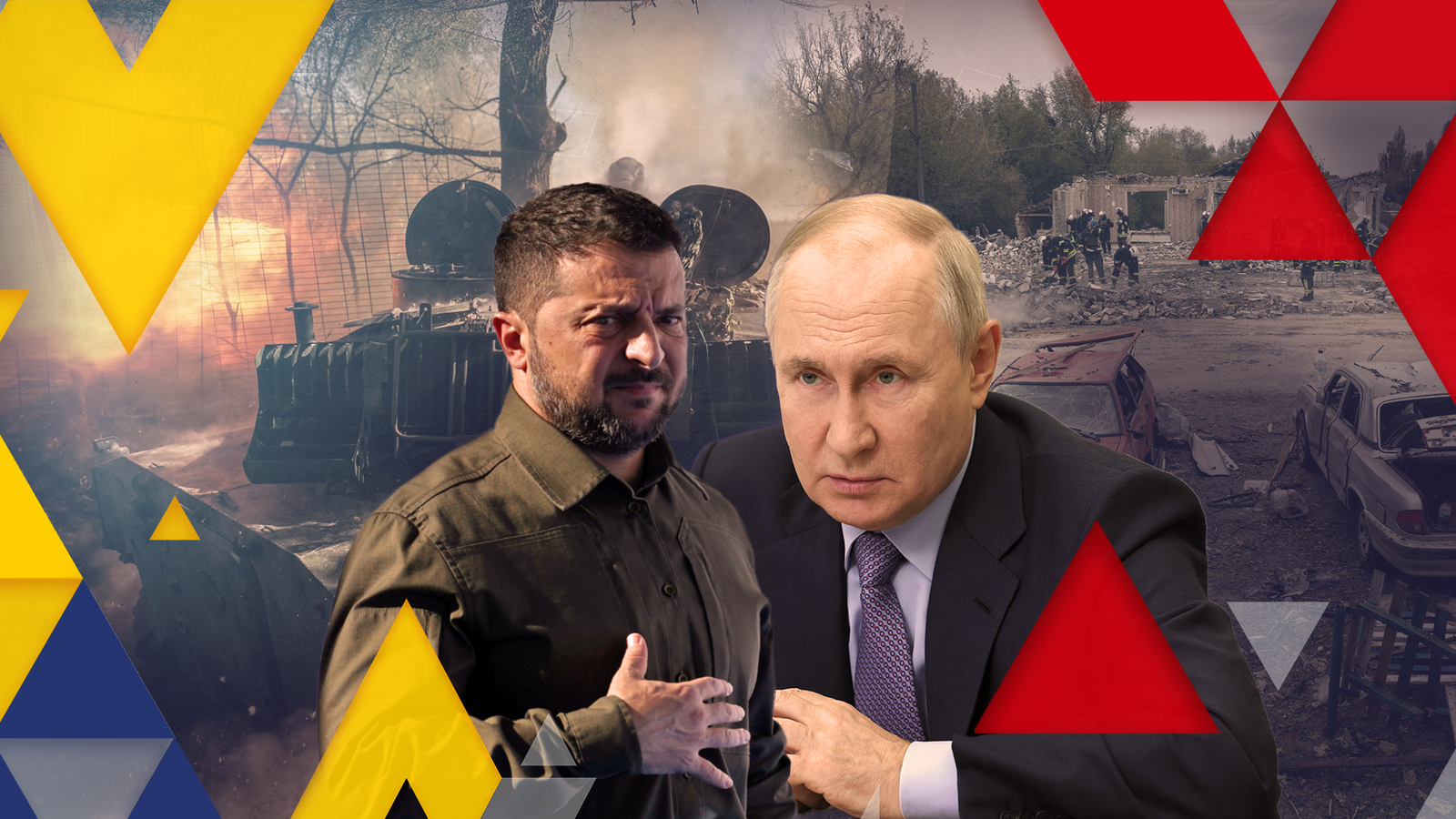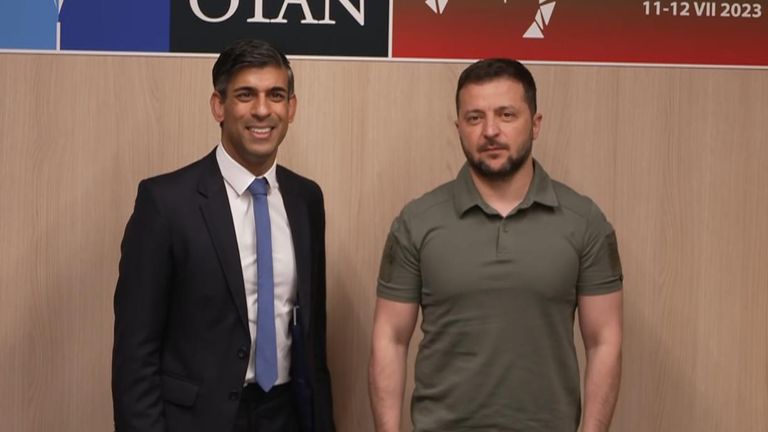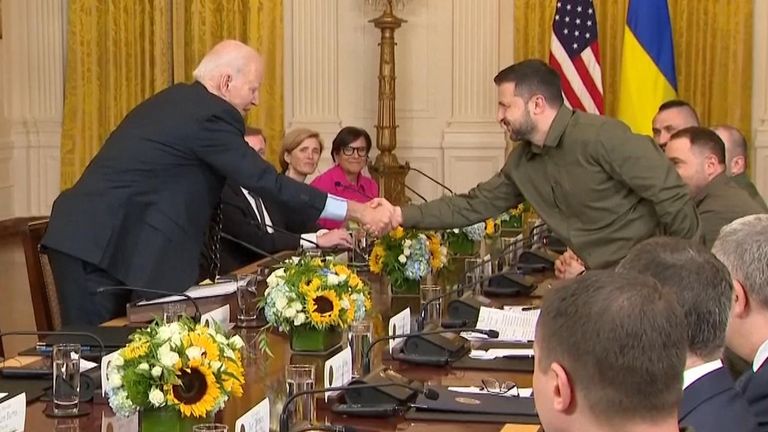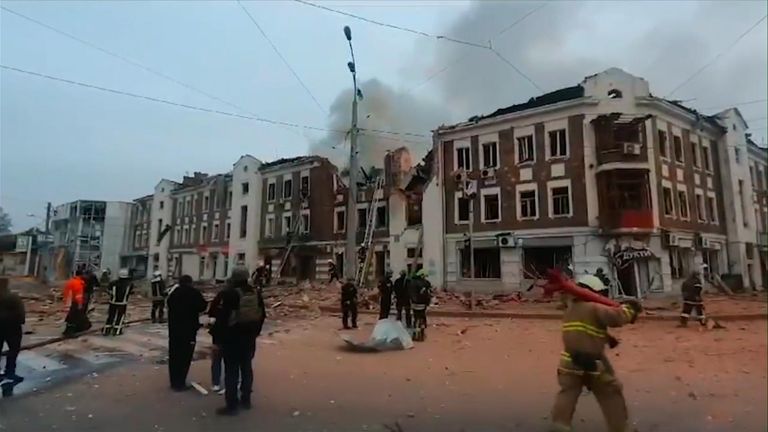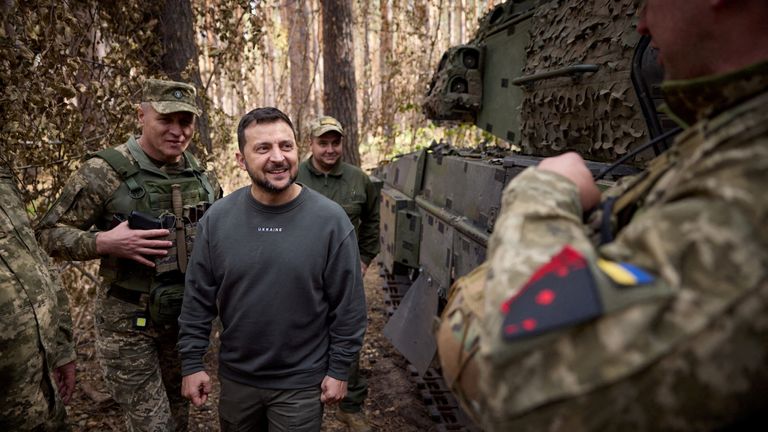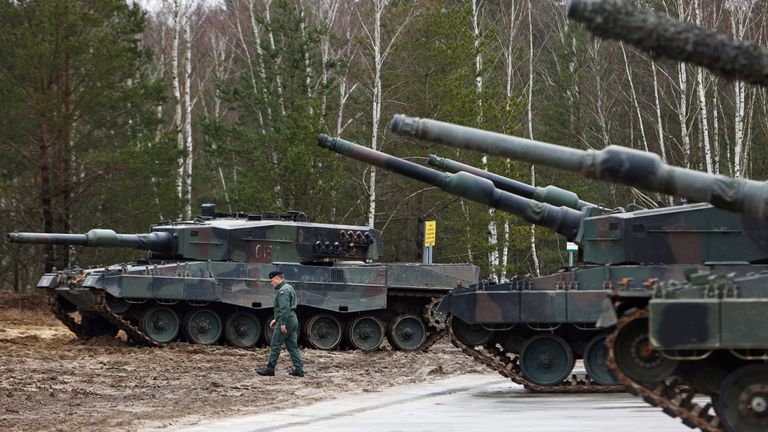Rishi Sunak pledged the UK government’s continued commitment to Ukraine during his speech at the Conservative Party conference.
Joe Biden has also reaffirmed US support for “as long as it takes”.
However, beyond the political rhetoric, public support for the conflict is waning, and democratic elections will – inevitably – impact Western support.
Is this the beginning of the end for Ukraine, and will Vladimir Putin’s aggression ultimately be rewarded?
Western military support for Ukraine is vital, not only material, but also moral.
However, as the war drags towards its second anniversary, the West’s ability – and enthusiasm – to maintain current levels of military aid are under growing pressure.
Notwithstanding the regular and fulsome Western political support for Volodymyr Zelenskyy, for how long can that rhetoric translate into vital military equipment, ammunition and financial aid?
Although there remains widespread Western sympathy for Ukraine’s plight, in the post-pandemic era with cost of living issues and high energy costs, choices need to be made.
Continued support for Ukraine has impacted adversely on the economies of Western nations and evidence suggests that public opinion is drifting inexorably towards domestic priorities.
The recent election of a pro-Kremlin leader as prime minister of Slovakia – a NATO country – was built on an election promise to cease Slovakian aid to Ukraine.
And this is not an isolated case.
Poland is also facing crucial elections, which has led to increased tensions with Ukraine.
US presidential and UK parliamentary elections are likely next year, and with a recent US poll suggesting that most Americans do not support continued aid to Ukraine, Western “war fatigue” is mounting.
West’s primary objective has been achieved, but is a protracted war supportable?
Although President Zelenskyy remains – understandably – committed to liberating every corner of Russian-occupied Ukraine, is that achievable?
This year the West has provided an extensive array of weapons, ammunition, military training and financial support.
However, four months into Ukraine’s “spring” offensive, and despite huge casualties for both sides, the frontlines remain largely static.
If Ukraine was unable to make progress this summer when arguably it was as well-prepared as it could ever be, would continued Western military support simply lead to a protracted, costly and largely static conflict.
Is that supportable?
From the West’s perspective, a key motivation for supporting Ukraine – not a member of NATO – was to avoid Russian aggression threatening the rest of Europe.
Russia’s military capability has been badly damaged by the invasion of Ukraine.
Russia has lost more than 2,000 of its most capable tanks – so it looks unlikely that it will have the military capability to threaten Europe again for at least a decade.
The West’s primary objective has been achieved.
Read more:
Why is Ukraine so successful in attacking key Russian military facilities?
As Ukraine effectively targets Russia’s Black Sea Fleet – is bigger still better in the military?
Supplying weapons is not sustainable
But even if public support was sustained, the supply of weapons is not sustainable.
Western military aid to Ukraine has focused on high-tech weapons to enable precision strike at range, with low collateral damage; this capability has been a vital component of Ukraine’s battlefield successes this past year.
But, modern weapons are expensive – so produced in limited numbers – and once acquired the production line closes.
So, stocks cannot be replaced swiftly. National stockpiles can be reduced, but only by taking increasing national security risks, and that is not something that can be continued ad infinitum.
The chairman of the NATO military committee has warned that Western weapon stocks are low, and there is little prospect of them being replenished in the near-term.
Western public support for the war is waning, and stockpiles of weapons are limited.
Click to subscribe to Ukraine War Diaries wherever you get your podcasts
Writing is on the wall
Ultimately, it is President Zelenskyy’s decision as to what next, but since all conflicts either end when one side is defeated – unlikely in this war – or a compromise is reached, the writing is on the wall.
Even if a compromise would be seen by many as a success for Putin, some might venture that it is better to “learn the wisdom of compromise, for it is better to bend a little than to break”.
However, that might prove a short-term palliative for a war-weary West.
But would such a decision deter Putin from future expansionist ambitions, and how would a compromise impact China’s calculus when considering its options over Taiwan?
As James Russell Lowell once opined, “compromise makes a good umbrella but a poor roof”.
